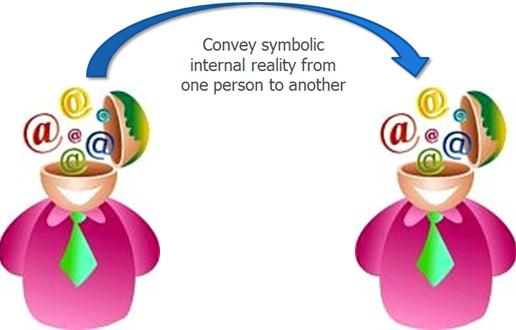Outside the realm of interpersonal communication exists another form of communication, which involves communication with mass audiences and hence the name mass communication; and the channels through which this kind of communication takes place are referred to as mass media. Both mass communication and mass media are generally considered synonymous for the sake of convenience. Mass communication is unique and different from interpersonal communication as evident from the following definition. Any mechanical device that multiplies messages and takes it to a large number of people simultaneously is called mass communication. The media through which messages are being transmitted include radio, TV, newspapers, magazines, films, records, tape recorders, video cassette recorders, etc and require large organizations and electronic devices to put across the message.… Read the rest
Business Communication
As the term suggests, business communication includes all communication that occurs in a business context. A knowledge of business communication presupposes an understanding of both business and communication.
E-mail & it’s business importance
Electronic mail, often abbreviated to e-mail, is a store and forward method of writing, sending, receiving and saving messages over electronic communication systems. The term e-mail applies to the internet e-mail system. E-mail is often used to deliver bulk unsolicited messages or “spam”, but filter programs exist which can automatically block, quarantine or delete some or most of these, depending on the situation.
The spellings e-mail and email are both common. Several prominent journalistic and technical style guides recommend e-mail, and the spelling email is also recognized in many dictionaries.
Why do you need email etiquette?
A company needs to implement etiquette rules for the following three reasons:
- Professionalism: by using proper email language your company will convey a professional image.
Types of small groups in business scenario
There are two major types of small groups, primary and discussion groups. The primary group is more informal in nature. Members get together daily or very regularly. The primary group is less goal-oriented and often there is conversation on general topics and not discussion on specific topic. Primary groups are not bound by any rules and are highly flexible.
Discussion groups are highly formal. These are characterized by face-to-face interactions where group members respond, react and adapt to the communication of other participants. A discussion group has one or more leaders. Members of discussion groups have common characteristics-geographic location, social class, economic level, life style, education level, etc.… Read the rest
Introduction to Group Communication
Group communication is an extension of interpersonal communication where more than two individuals are involved in exchange of ideas, skills and interests. A group is a number of people with a common goal who interact with one another to accomplish their goals, recognize one another’s existence and see themselves as part of the group. Groups provide an opportunity for people to come together to discuss and exchange views of common interest. There could be many different groups for as many different reasons. For instance, casually formed groups with friends over a drink, coffee break, games, dances or religious gatherings have a different purpose than that of groups attending a meeting or seminar to help fight AIDS or interacting with committee members to draft a proposal.… Read the rest
Definition of Interpersonal Communication
Interpersonal communication is the universal form of communication that takes place between two individuals. Since it is person-to-person contact, it includes everyday exchange that may be formal or informal and can take place anywhere by means of words, sounds, facial expression, gestures and postures.
In interpersonal communication there is face-to-face interaction between two persons, that is, both are sending and receiving messages. This is an ideal and effective communication situation because you can get immediate feedback. You can clarify and emphasize many points through your expressions, gestures and voices. In interpersonal communication, therefore, it is possible to influence the other person and persuade him or her to accept your point of view.… Read the rest
The process of Intrapersonal communication
Intrapersonal communication starts with a stimulus. Our intrapersonal communication is the reaction to certain actions or stimuli. These stimuli could be internal, originating from within us, or external, coming from an outside source. These stimuli are picked up by the sensory organs (PNS) and then sent to the brain. This process is called reception.
The sense organs pick-up a stimulus and send it to the central nervous system through the peripheral nervous system. While we receive all stimuli directed to us, we pay attention to only a few. This is because we practice selective perception. Only high ‘intensity’ stimuli like loud sounds, bright colors, sharp smells, etc.… Read the rest



